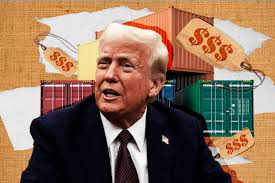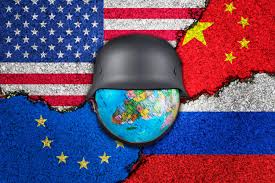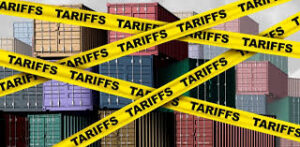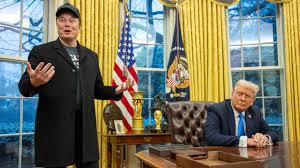Tariffs and Free Trade: Theory vs. Reality
And My Evolving View of Trump’s Trade Strategy

When Trump first started slapping tariffs on imports and threatening trade wars, I found myself cringing. I recall reading former Reagan budget director David Stockman’s scathing critique of Trump’s obsession with “winning” on trade by tallying up bilateral deficits and surpluses.
Stockman argued that Trump’s metric – the bilateral trade balance with each country – is “about the closest thing to meaningless statistical noise” one could find. In other words, fixating on whether we run a deficit or surplus with Country X misses the bigger picture of overall trade and economic welfare.
I shared those concerns. It seemed to me that Trump viewed trade as a zero-sum scoreboard, where any deficit meant we were “losing.”
My Miltonian education told me that unilateral tariffs would invite retaliation and hurt American exporters, while consumers at home would pay higher prices. Early on, many analysts warned of exactly that: higher costs for US businesses and families, disrupted supply chains, and alienated allies. Even some conservative free-marketers warned that a broad tariff war could backfire. I nodded along with those criticisms, worried that Trump was ignoring the timeless lesson that there are no real winners in trade wars – often everyone loses, even if one side loses less.
In theory, I remained convinced that Trump’s tariffs were a mistake. I feared we’d see the classic consequences: prices up, economic output down, and strained relations with trading partners.
And indeed, studies later found that the initial rounds of 2018–2019 tariffs produced a net negative impact on the US economy, shaving about 0.2% off long-run GDP and costing around 142,000 American jobs. A 2023 update by the US International Trade Commission reinforced this, noting that US importers bore 93% of the tariff costs on Chinese goods, and that prices increased significantly in categories like steel, aluminum, appliances, and electronics.
Those numbers reinforced my doubts. As an unabashed free-trader, I was hard-pressed to find much good in the tariff-heavy approach… at least at first.
A New Perspective

Despite my theoretical misgivings, as Trump’s trade battles unfolded, I began to see a different side of the argument. It started to dawn on me that tariffs aren’t just economic policy tools, they’re also geopolitical leverage.
In 2019, Trump threatened Mexico with tariffs unless they curbed illegal immigration. Mexico responded by deploying 6,000 troops to its southern border within days, agreeing to expand its “Remain in Mexico” policy for asylum seekers.
That surprised even skeptics. Since returning to office, Trump has revived this strategy, linking tariff threats to border enforcement and fentanyl trafficking. In early 2025, the administration announced 10% tariffs on select Chinese pharmaceuticals unless China strengthened export controls on fentanyl precursors – which Beijing quietly agreed to monitor more closely by March.
I couldn’t deny the pragmatic effectiveness of this use of tariffs. But would the economic cost outweigh the social and political gains? There were essays and articles being published at the time that defended Trump’s use of tariffs as a “big stick” with any number of trade partners. One argument that had me second-guessing my bias against tariffs: Global trade is so imbalanced in terms of supply and demand that the Miltonian prediction of reciprocal tariffs and trade wars wouldn’t happen. In a tariff standoff, “America holds all the cards,” one analyst said. Another analyst, writing for The Heritage Foundation, pointed out that US trading partners rely far more on access to the US market than the US does on theirs. The effect: The US wins if other countries submit to Trump’s demands and we win even bigger if the dispute evolves into an escalatory fight.
In the early days of Trump’s tenure, Canadian and European leaders objected furiously to his tariff threats. But by the end of March, the Office of the US Trade Representative was confirming rumors that several EU countries had reduced their industrial subsidies to avoid new steel tariffs that Trump threatened to impose.
Trump’s Tariffs – What the Data Show
1. Economic Impact of 2018–2019 Tariffs
* Reduced US GDP by 0.2%, costing an estimated 142,000 jobs. [Source: Tax Foundation, 2020]
* US importers paid 93% of the costs of Section 301 tariffs on Chinese goods. [Source: US International Trade Commission, 2023]
* Price hikes in affected goods (e.g., appliances, steel) averaged 10–20% within months of implementation. [Source: Federal Reserve Bank of New York, 2020]
2. Geopolitical Leverage
* In 2019, Trump’s tariff threat led Mexico to deploy 6,000 National Guard troops to its southern border within days. [Source: US Dept. of State, June 2019]
* In 2025, China agreed to stricter monitoring of fentanyl precursor exports following US tariff threats on pharmaceutical inputs. [Source: White House Press Office, March 2025]
* EU nations in March 2025 agreed to reduce certain industrial subsidies to avoid new US steel tariffs. [Source: US Trade Representative, 2025]
3. Tariffs as Policy Tools
* Trump administration argues tariff threats create a “win-win”: Either partners drop their own trade barriers or the US collects revenue from imports. [Paraphrased from Scott Bessent, Newsmax interview]
* Countries more dependent on US markets have less leverage to retaliate. [Source: The Heritage Foundation, 2024]
|
|
|
It was no longer possible to deny that Trump’s willingness to use tariffs for strategic leverage was having some positive outcomes. His demands, in many instances, put the US in a better negotiating position and in other cases resulted in a more level playing field in terms of trade imbalances. Still, these were short-term strategies to achieve short-term political and economic results. The Miltonian argument – that they would eventually end up inflating the costs of goods and services – was not denied by those short-term wins.
So, while I reserve my skepticism about the long-term inflationary effects of these tariffs, I’m happy about the short-term benefits they have already achieved and I’m hopeful that if Trump’s promised tax breaks are large enough to have their effect, the US GDP will begin to rise on the tide of those billions of dollars floating into the private sector, along with the general optimism that could bubble up among the wealth-producing classes.
Recently, Trump has thrown out the idea that if he can raise tariff income enough, the US government would no longer need income taxes to fund its projects. On the face of it, that seems like a nutty idea.
But let’s see. In 2024, the federal government collected $2.4 trillion in individual income taxes plus another $2.5 trillion in corporate and other taxes for a total of $4.9 trillion. But it spent $6.7 trillion, leaving a deficit of about $1.8 trillion.
Elon Musk, perhaps the greatest patriot in American history since Patrick Henry, is trying to reduce that deficit by $1 trillion. If, by some miracle, the liberal and lefty lunatics in the Beltway let him do that, and let’s say a Trump tax cut would generate another $1 trillion in corporate and other tax revenue, the dollar figure to run the country would be about $4.7 trillion.
That would balance the budget. But to eliminate the income tax, Trump would have to successfully boost tariffs by $2.4 trillion. Last year, the US collected a mere $700 billion in tariff revenue. Trump says that if his scheme for creating an “external revenue system” through taxes happens, he can raise more than six times that much!
Oddly, running the numbers that way feels like Trump’s big idea could actually work. But I’m sure I’m missing something. It doesn’t seem possible that Trump, or anyone, could reverse the US trade deficit to that degree.
The Elephant in the Room
Thinking about federal spending and income taxes and federal debt reminds me of what is for me the fiscal elephant in the room.
The federal deficit today is $36 trillion. To most Americans – in fact, to I’m sure many if not most people reading this now – that figure has become a meaningless abstraction. A number that fear-mongering conservatives keep talking about that has no bearing on the experience of the ordinary US taxpayer.
That is, of course, insanely wrong. Since the beginning of this millennium, US presidents and politicians from both sides of the political divide have been working in lockstep on one project: trying to buy votes by spending money the government doesn’t have. The cost of financing this debt – i.e., the amount of interest the US government must pay on this debt – will be nearly a trillion dollars this year. Add to that the $2 trillion budget deficit our government representatives dig us into every year, and you have a debt burden for each US taxpayer of about $235,000 that is going up about $20,000 a year.
That debt bubble is going to burst sooner or later. If it bursts in the next four years, there is no amount of tariff money that will save us.
|
|
|
Back to Trump’s tariff ideas. Where do I stand now?
I still believe, as Milton Friedman did, in the long-term benefits of free trade. But I now also believe there is room for tariffs as a tactical tool – especially when dealing with countries that flagrantly exploit trade imbalances or refuse to cooperate on key geopolitical issues. Used selectively and strategically, tariffs can create leverage and bring adversaries to the table.
But we must be careful not to let tariffs become the policy, rather than a means to an end. As policy, it could lead to protectionism, economic inefficiency, and a potential return to the very trade wars we should be trying to avoid.









